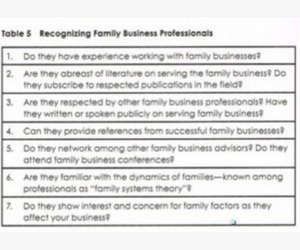Vulvodynia: We Don’t Have A Cure, but We Can Manage It
VULVODYNIA IS OFTEN UNDIAGNOSED OR MISDIAGNOSED
Vulvodynia is chronic vulvar nerve pain affecting the external female genital organs including the labia, clitoris, and vaginal opening. Women describe it as a burning or stinging sensation, or a feeling of rawness, or it can be a stabbing pain. Because it doesn’t have externally visible symptoms, and the physical exam can appear completely normal, vulvodynia is frequently either undiagnosed or misdiagnosed. In fact it’s only recently that we recognize it as a real pain syndrome. Too often women who experience this kind of pain in the vulvar area have been told that it was all in their heads, or they were instructed to take medications that didn’t help, such as medications for a yeast infection that they didn’t have.
WE DON’T UNDERSTAND THE ETIOLOGY OF VULVODYNIA YET
The risk factors for this condition are broad. They can include: allergens; early age of menarche; frequent use of vaginal medications (more than four treatments per year); coitus; physical, emotional, or sexual abuse; and adverse life effects such as divorce. Stress also plays an important role in vulvodynia. It is quite similar to the way headaches or GI tract problems can be made worse when there’s financial, work, or relationship stress.
WE CAN MANAGE IT, AND WE CAN IMPROVE FUNCTION
Because the causes of vulvodynia are multifactorial, there are a variety of approaches to managing it. Often we can reduce discomfort by as much as 50% by providing a nurturing environment for the skin. This means avoiding contact in the area with any product that isn’t hypoallergenic, including all products with fragrance. It also means avoiding washes and wipes. Hypoallergenic lotions or moisturizers, particularly vegetable oil-based ones, can help. Additional steps include oral neuropathic pain medications, which alter the perception of pain. Yoga or meditation may help with stress reduction. A woman with vulvodynia may have pelvic floor muscle problems because the muscles have inappropriately tightened in response to pain. A physical therapist with expertise in pelvic floor problems can help.
QUICK FIXES USUALLY DON’T WORK LONG TERM
Some practitioners recommend topical medicines, but I stay away from them. We clinicians want to be helpful and we want to recommend something for right now, but multiple studies have shown that while some quick fix medications work for the short term, over time the medication itself can become a contact irritant and offers little symptom resolution. When treating patients, I rarely do the same thing in the same order. I tell my patients, “We’re going on a journey together, and we’ll work on the most bothersome symptoms and then when these improve, we’ll move on to the secondary symptoms.”
IF THERE’S A BLADDER COMPONENT TO HER VULVODYNIA, DIET CHANGES CAN HELP
Foods can aggravate Vulvodynia when bladder problems involved. Have her avoid foods with a high acid content such as tomatoes, strawberries, or citrus. She might also try avoiding alcohol and the water-soluble vitamins such as the Bs and Cs. All of these can make the urine more acidic which can aggravate the vulva. In addition, some women have a bladder condition called interstitial cystitis (IC). Both IC and vulvodynia need to be treated for best outcomes.
INCLUDE THEIR PARTNERS
A woman may experience tremendous relationship problems when her vulvodynia causes her to avoid intercourse. I encourage my women to bring their partner in with them so everyone can understand what’s going on. It can be devastating when a woman not only has to deal with chronic pain, but she also has to deal with a situation that harms her intimate relationship.
IF THINGS AREN’T GETTING BETTER, THERE ARE OTHER APPROACHES TO TRY
The National Vulvodynia Association (https://www.nva.org) can suggest resources. The International Society for the Study of Vulvovaginal Disease (ISSVD.org) is also a useful resource.
Search Articles
Latest Articles
An Explosive Choice: Landmines and Ukraine
https://cepa.org/article/an-explosive-choice-landmines-and-ukraine/ Publication –cepa.org
Dancing Warriors: How Russia’s Propaganda is Impacting Professional Stages
https://foreignpress.org/journalism-resources/dancing-warriors-how-russias-propaganda-is-impacting-professional-stages Publication –foreignpress.org
Taking the Panic Out of Panic Attacks—With Technology
https://foreignpress.org/journalism-resources/taking-the-panic-out-of-panic-attackswith-technology Publication –foreignpress.org
An Evening Dedicated to Mental Health and Recovery in War-Torn Ukraine
https://foreignpress.org/journalism-resources/an-evening-dedicated-to-mental-health-and-recovery-in-war-torn-ukraine Publication –foreignpress.org
Subscribe to Updates
About Author

Mitzi Perdue is the widow of the poultry magnate, Frank Perdue. She’s the author of How To Make Your Family Business Last and 52 Tips to Combat Human Trafficking. Contact her at www.MitziPerdue.com
All Articles
Choosing Your Family Business Advisors
Choosing Your Family Business AdvisorsKnow when you need to get help. People often ask me the secret of Frank Perdue’s success. He had to do hundreds of things right. He had to be able to see the big picture as well as be detail oriented. But there was something else:...
Substance Abuse and the Family Business
Substance Abuse and the Family Business When it comes to substance abuse, members of a family business are no more immune than the rest of the population. However, as family business advisor Loyd Rawls points out, the consequences can be more dire because serious...
Infertility: Advances In Treatment
Infertility: Advances In TreatmentAge and Infertility are Linked Infertility affects roughly 12% of women. By the time a woman is in her early 40s, her chance of infertility rises to 20%. It’s a particularly difficult problem for the older woman because the quality...
Career Advice for Young People: Shut Up and Listen!
Career Advice for Young People: Shut Up and Listen! Jack Tatem, a former Perdue Vice President, has some serious advice for young people. It’s simple and it can make a big difference in your career. It has to do with listening. The advice is, “Shut up and listen!” He...
Embedding The Family’s Values by Creating an Ethical Will
Embedding The Family’s Values by Creating an Ethical WillOriginal Article written by Mitzi can be found here. Much as I admired Frank Perdue for his success with his family poultry business, I admired him even more for his success as a family man. Since the happiness...
6-Step Solution to Almost Any Problem
6-Step Solution to Almost Any Problem 1. Describe the Problem. Preferably do this in writing. The act of putting the problem into words can clarify your thinking. 2. Write Down the Obstacles. Although I’m a fan of positive thinking, I’m also a fan of research...





